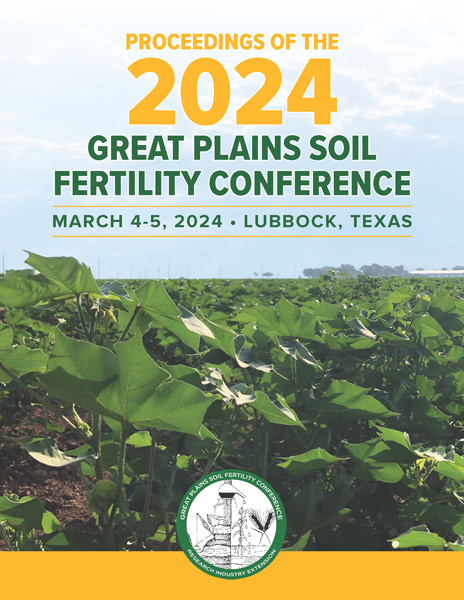Conference Proceedings Available!
Proceedings
Topics
| Filter results6 paper(s) found. |
|---|
1. Post-Wheat Summer Cover Crop Effects Crop Yields and Soil Properties in a No-till Dryland Cropping SystemTraditional dryland cropping systems in the semi-arid Great Plains include long fallow periods of up to 14 months to conserve soil moisture. However, such systems are inefficient even under continuous no-till (NT) management. As less water is necessary to produce forage compared to grain, cover crops (CCs) may be successfully integrated into dryland crop rotations for increased soil cover and potentially greater income when hayed or grazed as annual forages. One study was initiated in 2016 ne... L.M. Simon, A.K. Obour, J.D. Holman, M.E. Schipanski, S.K. Johnson, K.L. Roozeboom |
2. Snapshot of Crop Nutrient Balance with Use of a Rye Cover Crop in a Corn-soybean Rotation Under Tile Drainage in Eastern South DakotaThe purpose of this study was to evaluate the effect of using a winter rye cover crop within a corn/soybean rotation (rye seeded every fall and burned down each spring) on drainage water quality, crop nutrient status, and grain yield. Use of a winter rye cover crop to take up available N from the soil profile is a management tool that may help to lessen nutrient movement out of the soil profile while at the same time contributing to improved soil health. Winter rye is very winter ... P. Sexton, S. Kumar, S. Osborne, B. Brockmueller, A. Bly, B. Rops, A. Bawa, S. Bauder, J. Mcmaine |
3. Dramatic Soil Health Changes After 18 Years of Different Nitrogen Rates and Cropping Systems in the Northern Great PlainsRelatively few long-term cropping and nitrogen rates studies have been conducted in the semi-arid northern Great Plains that assess soil health changes. A cropping system study was initiated in 2002 in Bozeman, Montana (~400 mm annual precipitation) with wheat grown in even years, and either tilled fallow or one of the following no-till systems in odd years: fallow, wheat, pea grain, pea hay, pea green manure, and an alfalfa-grass (until 2012) followed by pea grain. N was applied at either 50... C. Jones, P. Miller, C. Zabinski, W. Fouts |
4. Soil Physical Quality Effects of Novel Perennial Grain Cropping at Two Contrasting Sites in Alberta, CanadaNovel perennial grain crops have been proposed as a solution to several environmental issues facing modern agriculture, namely the loss of soil quality often associated with annual monocrops. Abundant literature has stressed the importance of good soil quality for maintaining and improving ecosystem services provided by agricultural systems including, but not limited to, soil carbon sequestration, disease suppression and water filtration. Conversion of annual croplands to perennial systems ha... E. Daly, K. Kim , G. Hernandez-ramirez, K. Klimchuk |
5. Soil Carbon and Agroecosystem Benefits of Conservation Management and Perennial Bioenergy Crop ProductionConservation agricultural management practices and perennial bioenergy crops can increase soil organic C (SOC) stocks on marginal soils yet the time necessary to observe these benefits, as well as the upper limit of C storage isn’t known. Co-benefits often associated with SOC accumulation are positive effects on water and nutrient retention, soil microbial biomass and diversity and soil structure, resulting in better soil quality. However, interactions between nitrogen fertilizer, crop ... C.E. Stewart, V.L. Jin, M.R. Schmer, R.B. Mitchell, C. Williams, G.L. Miner |
6. Soil Health and Cotton Production in the Semi-arid Texas High PlainsSoil health has become a ubiquitous term in agriculture, but little is known about the impact of cropping system management on soil health metrics in semi-arid regions because of the majority of research has been conducted in humid or sub-humid regions of the United States. As a leading commodity of the semi-arid Southwest, cotton is an ideal candidate for soil health review. The purpose of this study was to assess a proposed set of soil health metrics in cotton production on the semi-arid Te... J. Burke, K. Lewis, P. Delaune |
